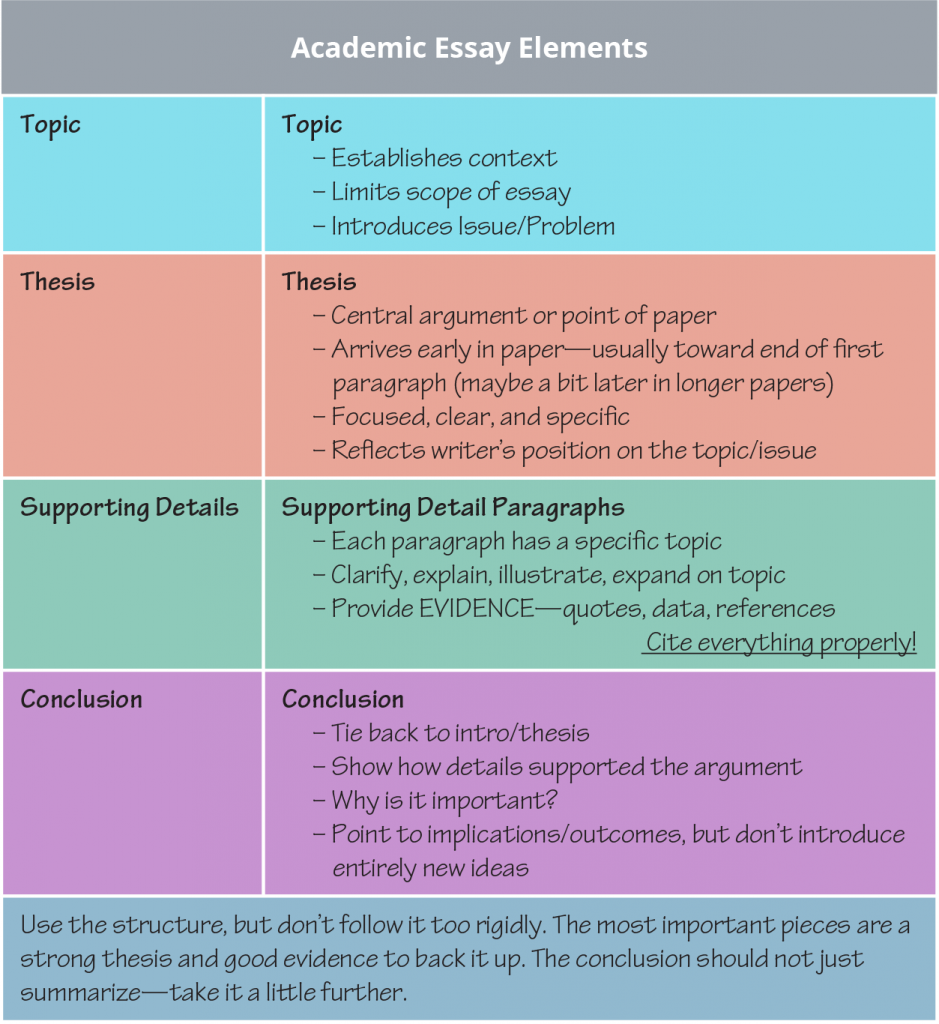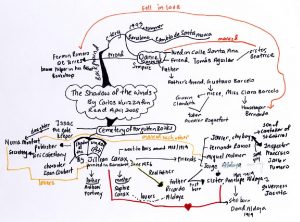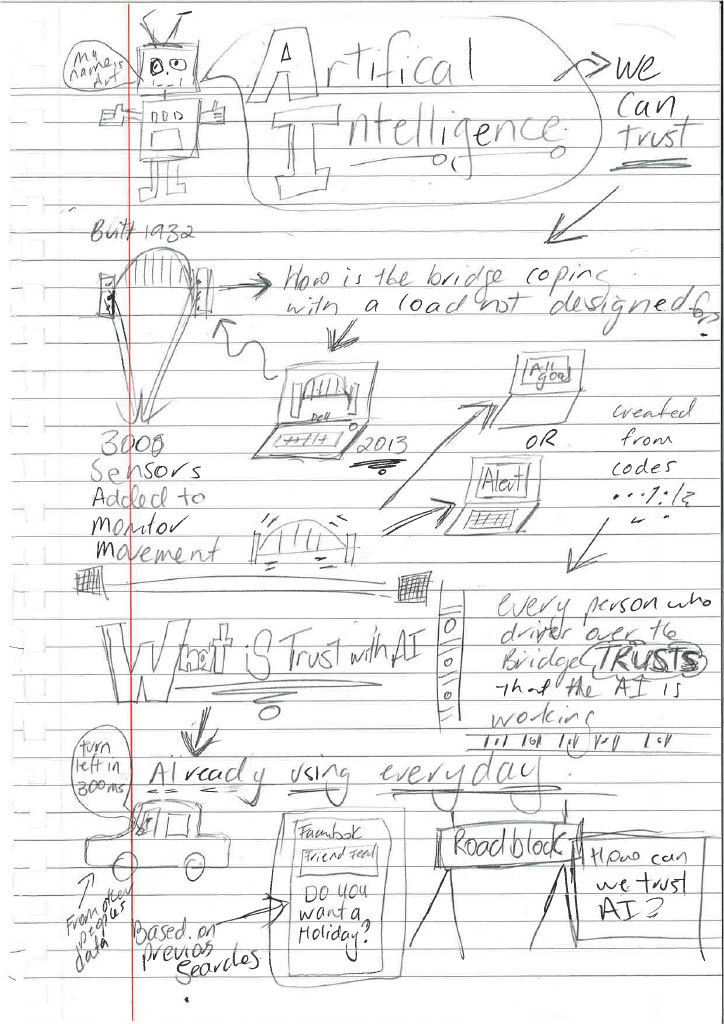Notetaking
Linda Clark and Charlene Jackson

Introduction
Notetaking and reading are two compatible skill sets. Beyond providing a record of the information you are reading or hearing, notes help you make meaning out of unfamiliar content. Well-written notes help you organise your thoughts, enhance your memory, and participate in class discussion, and they prepare you to respond successfully in exams. This chapter will provide you with guidelines for understanding your purpose for taking notes, and steps for taking notes before, during and after class. Then, a summary of different notetaking strategies will be provided so that you can choose the best method for your learning style. Finally, you will discover ways to annotate your notes to enable quick reference, along with information about taking notes specifically for assignments.
Understanding Your Purpose for Learning
Knowing your course requirements and the intended purpose for your notes should impact the type of notes you take. For example, are you:
- taking lecture notes that will become the basis of exam study?
- taking notes while watching your classes online?
- taking notes from books or articles for an assignment?
There are no right or wrong ways to take notes, but it is important to find strategies that work for you and are efficient for your purpose.
Taking Notes from Classes
Whether you are attending classes on campus or are studying online, it is still important to take notes from your lectures. Notes help you keep up with the content each week which in turn helps you prepare for your exams. There are things you should consider before, during and after your lectures to assist with your notetaking.
Before the class
In some courses the weekly class content is available before the lecture as PowerPoint slides. This may make it tempting not to take notes, however these slides usually only have key points. Further details and explanations are given verbally in the class. A good tip is to print the PowerPoint slides before the lecture and use them as the basis for your note taking. If you select the three slides per page from the print options, it will give you room to take some notes. Come to lectures prepared by completing any set reading or tasks for that week. This will help you understand the content and more easily make decisions about what relevant notes to take.
During the class

Take notes to actively engage in the process of learning. This will help with concentration. Handwriting your notes has been proven to increase memory and retention. Do not try to write down every word or you will miss important information. Keep your notes brief, use keywords, short sentences and meaningful abbreviations.
Most lectures are recorded so you can go back and check for anything you missed. It is a good idea also to leave plenty of space for these thoughts, or for adding in pictures or diagrams. Pay attention to the structure or organisational pattern of the lecture. Key points are usually outlined at the beginning of the lecture, and repeated or summarised at the end. Listen for language cues emphasising important information including:
- numerical lists, e.g. “firstly…, secondly”, “there are three steps/stages…”
- phrases such as “on the other hand”, “in particular”, “remember/note/look out for”, “consequently”
- inclusion of examples or hypothetical situations
- emphasis of a particular point through tone of voice
If you do not understand the content, make a note or write a question and follow this up in your tutorial or discussion forum.
After the class
It is important that you re-read your notes as soon as possible after the class, when the content is still fresh in your mind, and make any additions. If you have exams in your course, then it is important to spend time organising your notes throughout the semester. This will ensure that by the end of the semester you will have well-ordered notes that are meaningful and useful to learn from, saving you valuable exam preparation time. Your learning preference will inform the review strategies you choose.
Notetaking Strategies
There are several different notetaking strategies. Regardless of your method, be sure to keep your notes organised, store notes from the same subject together in one place, and clearly label each batch of notes with subject, source and date taken. Here are three notetaking strategies you can try; Cornell Method, linear notes and concept mapping.
Cornell Method
One of the most recognisable notetaking systems is called the Cornell Method. In this system, divide a piece of paper into three sections: the summary area, the questions column and the notes column (see Figure 16.3). The Cornell Method provides you with a well-organised set of notes that will help you study and review your notes as you move through the course. If you are taking notes on your computer, you can still use the Cornell Method in Word or Excel.

The right-hand notes column: Use this section to record in your own words the main points and concepts of the lecture. Skip lines between each idea in this column and use bullet points or phrases. After your notetaking session, read over your notes column and fill in any details you missed in class.
In the questions column: Write any one or two-word key ideas from the corresponding notes column. These keywords serve as cues to help you remember the detailed information you recorded in the ‘notes’ column.
The summary area: Summarise this page of notes in two or three sentences using the summary area at the bottom of the sheet. Before you move on, read the large notes column, and quiz yourself over the key ideas you recorded in the questions column. This review process will help your memory make the connections between your notes, your textbook reading, your in-class work, and assignments.

The main advantage of the Cornell Method is that you are setting yourself up to have organised, workable notes. This method is a useful strategy to organise your notes for exam preparation.
Linear notes
A common format for note taking is a linear style – using numbers or letters to indicate connections between concepts. Indicate the hierarchy of ideas by using headings, written in capitals, underlined or highlighted in some way. Within concepts, ideas can be differentiated by dot points, or some other indicator, to create an outline that makes the notes easier to read. The main benefit of an outline is its organisation.
The following formal outline example shows the basic pattern:

Notetaking can continue with this sort of numbering and indenting format to show the connections between main ideas, concepts and supporting details.
Concept mapping

One final notetaking method that appeals to learners who prefer a visual representation of notes is called mapping or sometimes mind mapping or concept mapping. The basic principles are that you are making connections between main ideas through a graphic depiction. Main ideas can be circled, with supporting concepts radiating from these ideas, shown with a connecting line and possibly details of the support further radiating from the concepts. You may add pictures to your notes for clarity.
Sketchnoting
Sketchnoting differs from concept mapping. Concept maps use a hierarchical structure and consist primarily of text with a focus on one main theme, and show the connections between ideas related to that theme. Sketch notes have a picture focus using a flexible layout and can cover one or a range of themes. (See Figure 16.6)

Sketchnoting is a personalised way of combining words with visual elements such as drawings, icons, shapes and lines. This style of notetaking is used by students to maintain engagement, enhance understanding, and to retain information from verbal or written content. The sketchnoting technique is used to organise ideas and summarise content in a meaningful way to help the notetaker recall the information at a later date. Sketchnoting can be created digitally or using pen and paper. You can choose your style and preference.
Annotating notes
Annotations can refer to anything you do with a text to enhance it for your particular use (either a printed text, handwritten notes, or other sort of document you are using to learn concepts). The annotations may include highlighting passages or vocabulary, defining those unfamiliar terms once you look them up, writing questions in the margin of a book and underlining or circling key terms for future reference. You can also annotate some electronic texts.
Your mantra for highlighting text should be less is more. Always read your text selection first before you start highlighting anything. You need to know what the overall message is before you start placing emphasis in the text with highlighting. Another way to annotate notes after initial notetaking is underlining significant words or passages.

Taking notes for assignments
When taking notes for an assignment, be clear whether they are your own words, or a direct quote so that you do not accidentally plagiarise. When you have finished taking notes, look for key themes or ideas and highlight them in different colours. This organises your information and helps you to see what evidence you have to support various ideas you wish to make in your assignment. Make sure to record the author, title, date, publishing details and relevant page numbers of books and articles you use. This will save you time and avoid errors when referencing.
Electronic Notetaking
If you use an e-reader or e-books to read texts for class or read articles from the internet on your laptop or tablet, you can still take effective notes. Almost all electronic reading platforms allow readers to highlight and underline text. Some devices allow you to add a written text in addition to marking a word or passage that you can collect at the end of your notetaking session. Look into the specific tools for your device and learn how to use the features that allow you to take notes electronically. You can also find apps on devices to help with taking notes. Microsoft’s OneNote, Google Keep, and the Notes feature on phones are relatively easy to use, and you may already have free access to those.
Conclusion
Notetaking is a major element of university studying and learning. As you progress through your study, your notes need to be complete so you can recall the information you learn in lectures. The strategies that have been explored in this chapter will help you to be deliberate in your notetaking.
- Know the purpose for your notes.
- Before the class, print any lecture slides with the notes option.
- During the class, keep your notes brief, use keywords, short sentences and meaningful abbreviations.
- After the class, re-read your notes and organise them.
- The Cornell Method uses a table with a summary area, a questions column and a notes column.
- Linear notetaking uses headings, numbers or letters to show hierarchy and connections between concepts.
- Concept mapping uses graphic depiction to connect ideas.
- Sketchnoting is a creative way to make personalised meaningful notes from written or spoken content.
- Annotating your notes with highlights, underlining, circling or writing in the margin can enhance your understanding.
- Notetaking for assignments must show clearly when the words are your own or are a direct quote. Record the source details for use in referencing.
- Notetaking can be performed by hand or on electronic devices.

